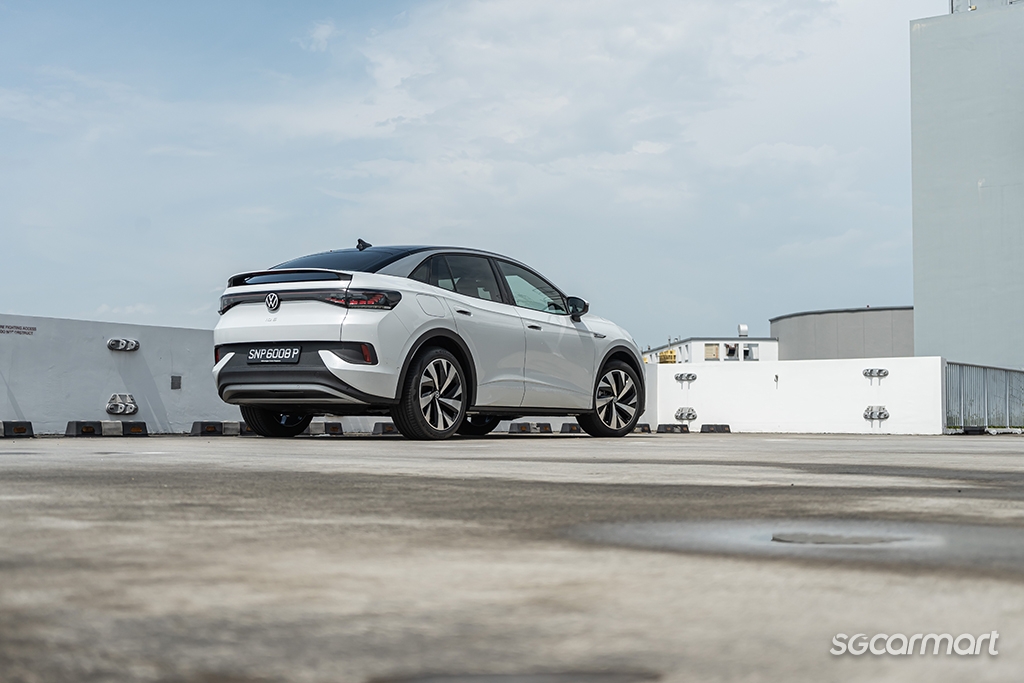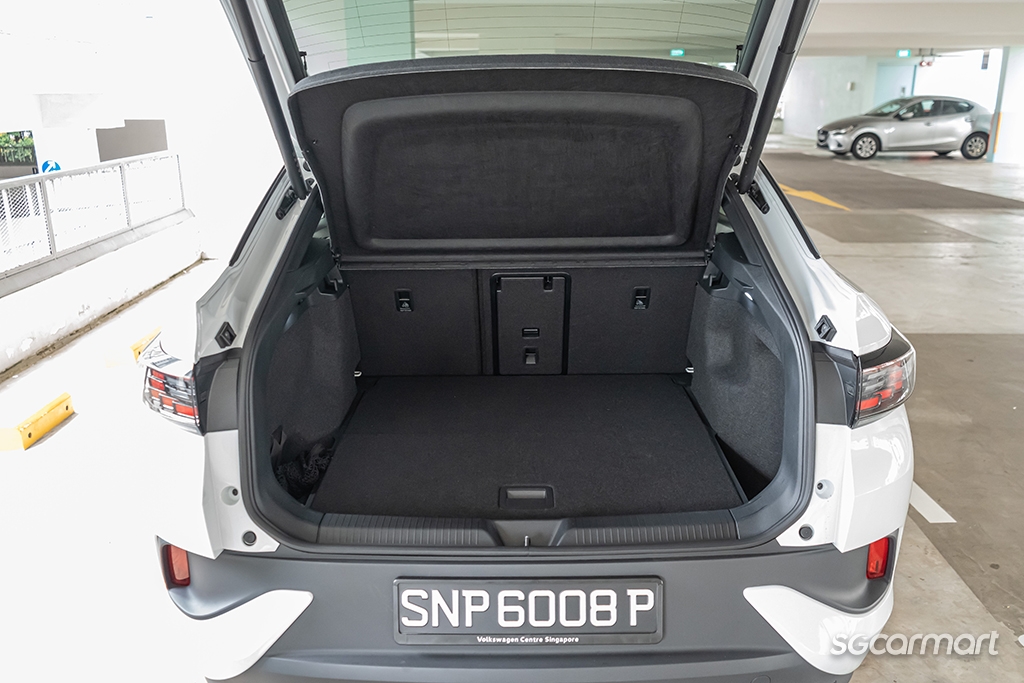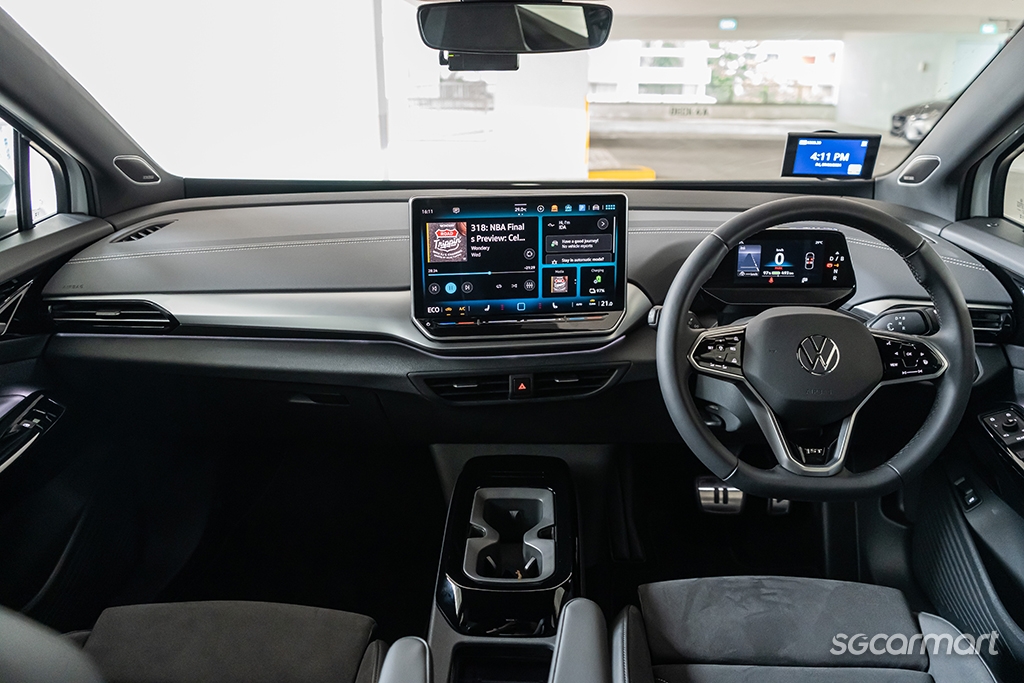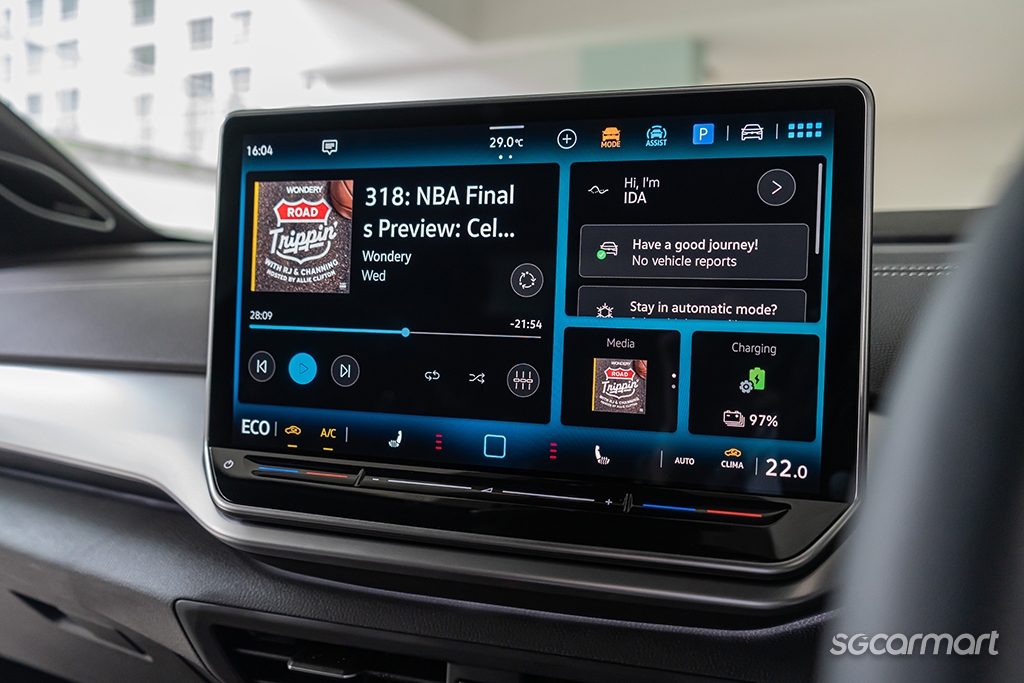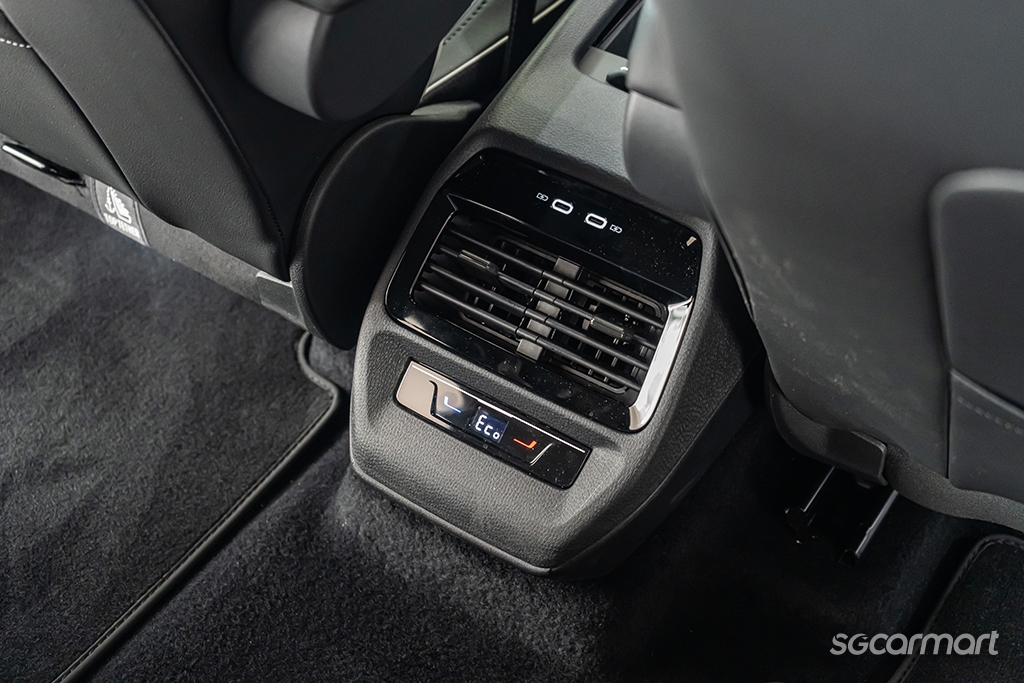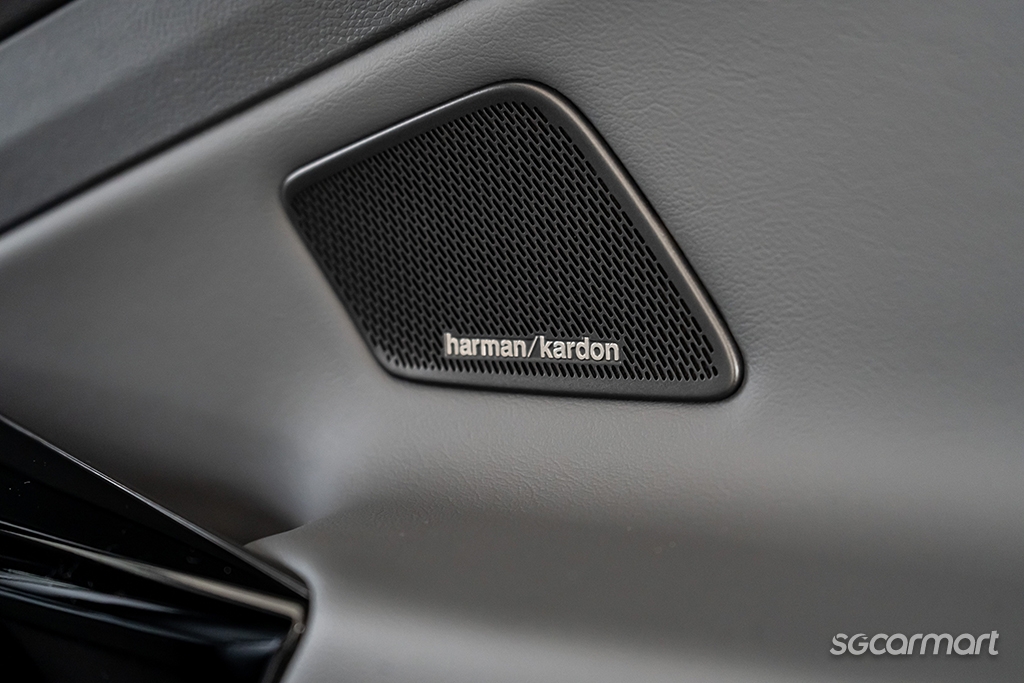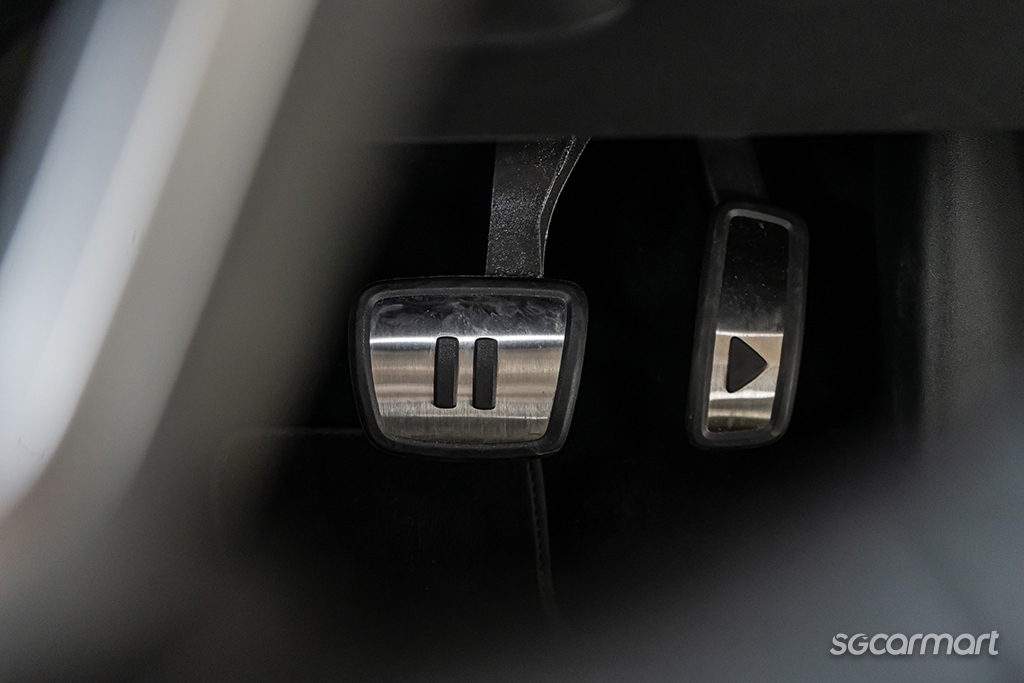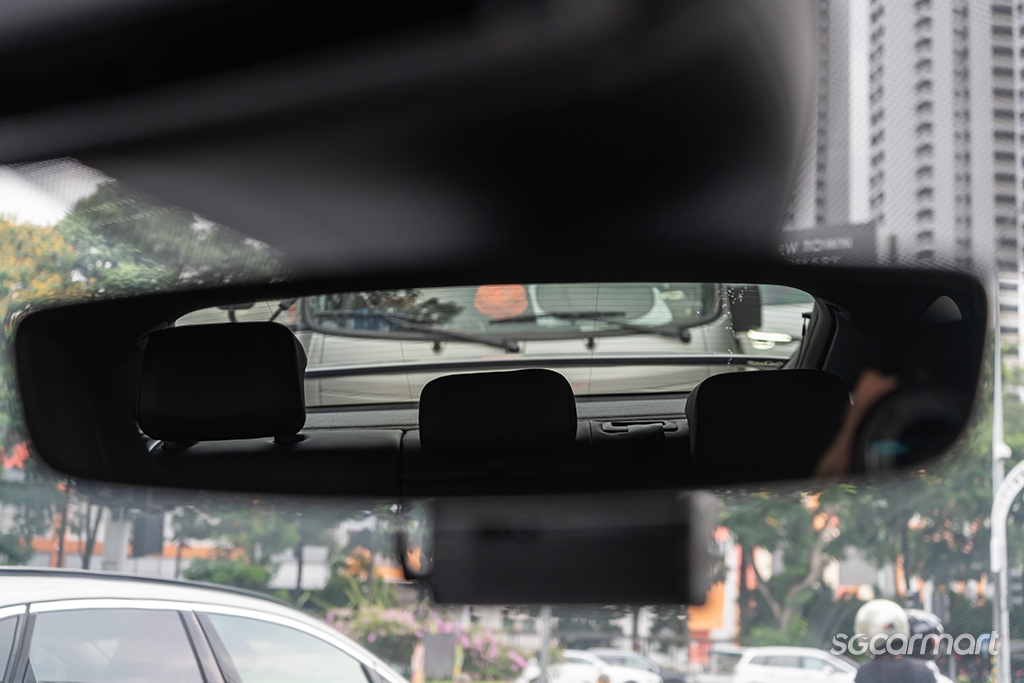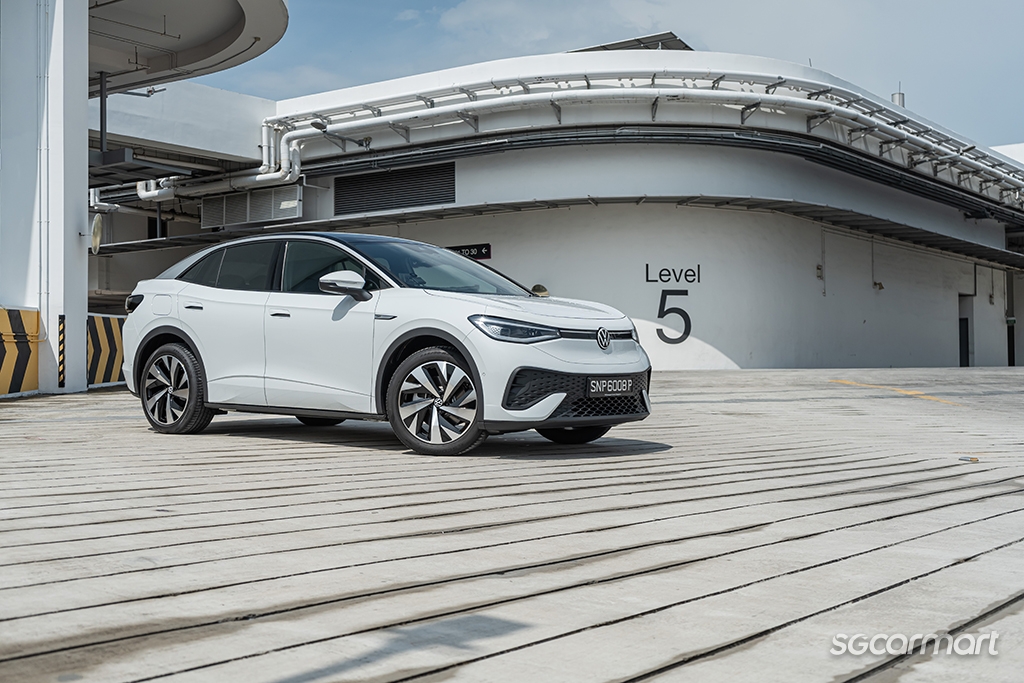Volkswagen ID.5 82kWh Review
21 Jun 2024|1,464 views
What We Like
Easy and pleasant to drive
Effortless pace combined with good on-road comfort
Some neat UX touches
Good range
What We Dislike
Spongy brake feel
Rear spoiler impedes vision
Some odd UX choices
As I increase the volume yet again on the (still) annoying capacitive touch controls on the steering wheel, I am once more confounded by some of the odd choices that have gone into the user experience (UX) design of this car.
At least setting off is simple enough - just twist the gear lever into D, hit the play pedal, and off we go.
A familiar new formula
This is… not the ID.4, though by most images you may easily be mistaken. This is the ID.5, essentially a 'coupe' variant of the ID.4 (which is a more typically-shaped all-electric SUV).
Not that you'd be able to easily spot the difference. With many of the same exterior shapes and details as the ID.4 (and even many of the exact same lines), the ID.5 doesn't immediately set itself visually apart.
The ID.5 gets a slightly different front bumper design, and it's only at the rear where the distinction is more obvious. There is that tapered roof, of course, but the most noticeable element is the rear spoiler that cuts directly across the middle of the rear windscreen (more on that later).
As a whole, the car's bulbous, slightly organic shape is pleasant, if not pretty. It does have the effect of emphasising the car's size, making it look visually bigger than it actually is.
On the matter of size, the ID.5 is marginally longer than the ID.4 (4,599mm vs the ID.4's 4,584mm), though the wheelbase is actually 1mm shorter. The extra length translates to… 6-litres of additional boot space.
Interior choices
Step inside, and it's basically the same as the ID.4. The only difference I can detect on the spec sheet on the respective Pro variants is that the ID.5 comes standard with a 8-speaker Harmon Kardon sound system, and you get the bi-colour sports seats.
Personally, I'm not a big fan of these sports seats (the backrest is a one-piece unit rather than having an adjustable head rest). I find them ergonomically awkward for my personal driving position.
I do like the Harmon Kardon sound system, though it's worth pointing out (as with any audio equipment, really) that you're only going to hear detectable differences at relatively loud volumes. I play my music quite loud, so yes, it matters, but if you typically just have the radio on as a kind of background music, then the difference will be imperceptible.
The rest of the cabin is quite typical modern VW fare. You've got plenty of digital touches, like the 12.3-inch central display. It's certainly an improvement in terms of overall functionality and prettiness. It's a very straightforward system to use, and reasonably well-organised. As a whole, the cabin is a comfortable, well-organised and pretty spacious place to be in. Despite the raked roof, rear headroom is still agreeable for Asian adults.
However, I have some gripes concerning the overall UX, which I find… confusing. There are some well-thought out decisions, then also some confounding ones.
One thing I appreciate is the three-zone climate control, which is intelligent enough to detect whether there are passengers occupying the other seats or not. When unoccupied, the system automatically switches that particular zone to the 'Eco' setting to conserve energy. Only when occupied do each climate zone revert to the original temperature setting. This is smart. More cars should do this.
There's no wireless Apple CarPlay or Android Auto (you will have to use a wire), and when you are connected using Bluetooth audio, the system resets the volume (to approximately 25%) every time you start the car, rather than recalling your last set volume. This is annoying if you listen to music/podcasts quite loudly (like me). This is not smart.
I like how simple it is to 'on' the car. Just get in, foot on the brake, twist the gear shifter into D, and you're ready to go. Neat touch.
You still get the capacitive touch controls on the steering wheel (you know how we feel about them) - can't wait for the return of physical buttons.
And, there's also something VW calls ID. Light, which is a light bar at the top of the dashboard that can illuminate to indicate various car functions. It's not a bad idea in concept, but in execution it's harder to grasp because it's not immediately clear what those functions are. In my limited experience with it, I did not find it useful.
As a result, the overall UX is… a puzzling mix of excellent and annoying.
Comfortable cruising
On the road, the familiarity (once again) with the ID.4 is impossible to miss. After all, this Pro variant has the exact same powertrain as the ID.4 Pro, so you get a single electric motor producing a very healthy 210kW and 545Nm of torque. 0-100km/h is done in the (same) 6.7 seconds, though in truth it feels more brisk than that. Oddly enough, though both cars have the same listed consumption figure of 4.7km/kWh, the ID.5 actually has a marginally greater range of 556km compared to the ID.4's 550km.
It's a very pleasant car to drive. Power is effortless, ride comfort is high, and overall noise insulation is good. As a daily runabout vehicle, it's expectedly amenable.
Issues? The ID.5 suffers from the same spongy brake feel as the ID.4, and I do wish there was a way to adjust the regenerative braking level beyond just choosing between D/B.
Otherwise, there's not much to fault the car in the way it performs on the road. VW promises 556km of range from the 77kWh (usable) battery pack, and over a weekend of driving, I managed to clock a consumption figure of 5.7km/kWh. That would put me at 440km on a full charge. This is a pretty solid number considering I did a mix of city/highway driving (more city than highway, really), and had a boot load of heavy guitar equipment throughout the weekend.
My one big complain is with the rear spoiler - it's annoyingly positioned right in the middle of your rear-view sightline, and actually hampers rearward visibility.
Too similar?
Look, much like the ID.4, the ID.5 is a competent and well-rounded electric SUV, even if it has some inherent flaws. This should come as no surprise - the two models are eerily similar.
As of 19 June 2024, the ID.5 is asking for a $10,000 premium over the ID.4, and for that money, what you're really getting is a bit of an equipment upgrade (and perhaps a style upgrade, though that's much more subjective). Despite its styling, the ID.5 does not feel any more sporty to drive than the ID.4.
In that sense, the ID.5 struggles to set itself apart from the ID.4.
If you wanted a spacious, comfortable and practical electric SUV from VW, the car you probably want is the ID.4. And, you don't have to worry about a rear spoiler interrupting your rear view.
Here are a few other electric coupe-SUVs that you may want to consider!
The Audi Q4 Sportback e-tron is a strong contender in the electric SUV segment
What We Like
Easy and pleasant to drive
Effortless pace combined with good on-road comfort
Some neat UX touches
Good range
What We Dislike
Spongy brake feel
Rear spoiler impedes vision
Some odd UX choices
As I increase the volume yet again on the (still) annoying capacitive touch controls on the steering wheel, I am once more confounded by some of the odd choices that have gone into the user experience (UX) design of this car.
At least setting off is simple enough - just twist the gear lever into D, hit the play pedal, and off we go.
A familiar new formula
This is… not the ID.4, though by most images you may easily be mistaken. This is the ID.5, essentially a 'coupe' variant of the ID.4 (which is a more typically-shaped all-electric SUV).
Not that you'd be able to easily spot the difference. With many of the same exterior shapes and details as the ID.4 (and even many of the exact same lines), the ID.5 doesn't immediately set itself visually apart.
The ID.5 gets a slightly different front bumper design, and it's only at the rear where the distinction is more obvious. There is that tapered roof, of course, but the most noticeable element is the rear spoiler that cuts directly across the middle of the rear windscreen (more on that later).
As a whole, the car's bulbous, slightly organic shape is pleasant, if not pretty. It does have the effect of emphasising the car's size, making it look visually bigger than it actually is.
On the matter of size, the ID.5 is marginally longer than the ID.4 (4,599mm vs the ID.4's 4,584mm), though the wheelbase is actually 1mm shorter. The extra length translates to… 6-litres of additional boot space.
Interior choices
Step inside, and it's basically the same as the ID.4. The only difference I can detect on the spec sheet on the respective Pro variants is that the ID.5 comes standard with a 8-speaker Harmon Kardon sound system, and you get the bi-colour sports seats.
Personally, I'm not a big fan of these sports seats (the backrest is a one-piece unit rather than having an adjustable head rest). I find them ergonomically awkward for my personal driving position.
I do like the Harmon Kardon sound system, though it's worth pointing out (as with any audio equipment, really) that you're only going to hear detectable differences at relatively loud volumes. I play my music quite loud, so yes, it matters, but if you typically just have the radio on as a kind of background music, then the difference will be imperceptible.
The rest of the cabin is quite typical modern VW fare. You've got plenty of digital touches, like the 12.3-inch central display. It's certainly an improvement in terms of overall functionality and prettiness. It's a very straightforward system to use, and reasonably well-organised. As a whole, the cabin is a comfortable, well-organised and pretty spacious place to be in. Despite the raked roof, rear headroom is still agreeable for Asian adults.
However, I have some gripes concerning the overall UX, which I find… confusing. There are some well-thought out decisions, then also some confounding ones.
One thing I appreciate is the three-zone climate control, which is intelligent enough to detect whether there are passengers occupying the other seats or not. When unoccupied, the system automatically switches that particular zone to the 'Eco' setting to conserve energy. Only when occupied do each climate zone revert to the original temperature setting. This is smart. More cars should do this.
There's no wireless Apple CarPlay or Android Auto (you will have to use a wire), and when you are connected using Bluetooth audio, the system resets the volume (to approximately 25%) every time you start the car, rather than recalling your last set volume. This is annoying if you listen to music/podcasts quite loudly (like me). This is not smart.
I like how simple it is to 'on' the car. Just get in, foot on the brake, twist the gear shifter into D, and you're ready to go. Neat touch.
You still get the capacitive touch controls on the steering wheel (you know how we feel about them) - can't wait for the return of physical buttons.
And, there's also something VW calls ID. Light, which is a light bar at the top of the dashboard that can illuminate to indicate various car functions. It's not a bad idea in concept, but in execution it's harder to grasp because it's not immediately clear what those functions are. In my limited experience with it, I did not find it useful.
As a result, the overall UX is… a puzzling mix of excellent and annoying.
Comfortable cruising
On the road, the familiarity (once again) with the ID.4 is impossible to miss. After all, this Pro variant has the exact same powertrain as the ID.4 Pro, so you get a single electric motor producing a very healthy 210kW and 545Nm of torque. 0-100km/h is done in the (same) 6.7 seconds, though in truth it feels more brisk than that. Oddly enough, though both cars have the same listed consumption figure of 4.7km/kWh, the ID.5 actually has a marginally greater range of 556km compared to the ID.4's 550km.
It's a very pleasant car to drive. Power is effortless, ride comfort is high, and overall noise insulation is good. As a daily runabout vehicle, it's expectedly amenable.
Issues? The ID.5 suffers from the same spongy brake feel as the ID.4, and I do wish there was a way to adjust the regenerative braking level beyond just choosing between D/B.
Otherwise, there's not much to fault the car in the way it performs on the road. VW promises 556km of range from the 77kWh (usable) battery pack, and over a weekend of driving, I managed to clock a consumption figure of 5.7km/kWh. That would put me at 440km on a full charge. This is a pretty solid number considering I did a mix of city/highway driving (more city than highway, really), and had a boot load of heavy guitar equipment throughout the weekend.
My one big complain is with the rear spoiler - it's annoyingly positioned right in the middle of your rear-view sightline, and actually hampers rearward visibility.
Too similar?
Look, much like the ID.4, the ID.5 is a competent and well-rounded electric SUV, even if it has some inherent flaws. This should come as no surprise - the two models are eerily similar.
As of 19 June 2024, the ID.5 is asking for a $10,000 premium over the ID.4, and for that money, what you're really getting is a bit of an equipment upgrade (and perhaps a style upgrade, though that's much more subjective). Despite its styling, the ID.5 does not feel any more sporty to drive than the ID.4.
In that sense, the ID.5 struggles to set itself apart from the ID.4.
If you wanted a spacious, comfortable and practical electric SUV from VW, the car you probably want is the ID.4. And, you don't have to worry about a rear spoiler interrupting your rear view.
Here are a few other electric coupe-SUVs that you may want to consider!
The Audi Q4 Sportback e-tron is a strong contender in the electric SUV segment
Car Information
Volkswagen ID.5 Electric 82 kWh (A)
$240,900
CAT B|Electric|4.7km/kWh
Horsepower
210kW (282 bhp)
Torque
545 Nm
Acceleration
6.7sec (0-100km /hr)
Promotion
Exclusive EV offers worth up to $18,000! Enjoy immediate savings with price starting from $219,900*
Read moreThank You For Your Subscription.
















































